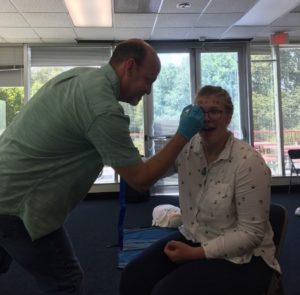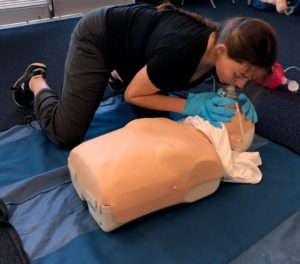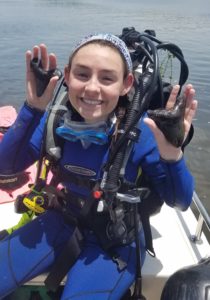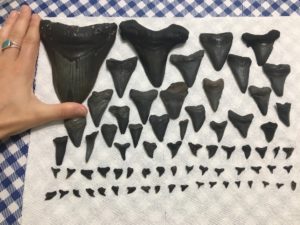Diving can take individuals all over the world, and it is becoming increasingly accessible to people, including those with diverse backgrounds. This calls for the ability of critical safety materials to be available globally and meet the needs of the growing diver profile.
If you are a dive professional, you may have had the opportunity to take DAN’s Diving First Aid for Dive Professionals (DFA Pro) course. It is a comprehensive course focused on diving and non-diving related injuries. Content includes emergency O2 first aid, CPR with AED, and marine life-related injuries to provide basic training for those who use diving as part of their jobs or volunteer activities. The first version of this course was created in 2006 at the request of aquariums needing to track a variety of staff and volunteer divers to maintain their accreditation. After many years of research and revision, the course is now on version 3.0 with release expected in 2020. 
DAN is a global leader in scuba diving safety resources and has locations all over the world, including Asia Pacific, Brazil, South Africa, Europe, and headquarters in Durham, North Carolina. However, all the course materials and guidelines come from the DAN headquarters here in the U.S.
As a member of DAN and a dive professional-in-training, I had the opportunity to take this course both for my own benefit and for part of my internship. This past week, I finished the skills portion and completed the course. I definitely improved my emergency response skills and become more confident with each time I practice!

A humorus break—not so funny! Camilo was a great patient. Picture by Tess Helfrich.

Instructor Jim writing on Instructor Tess’s forehead to demonstrate part of proper tourniquet usage. Congrats, Tess, on earning your DFA Pro Instructor status!
Behind the scenes of the classroom, Patty Seery, Jim Gunderson, and I have been working together to reassess and rewrite the course materials as needed to fit our global audience. This includes comparing guidelines from organizations that are part of the International Liaison Committee on Resuscitation (ILCOR) such as the American Heart Association (AHA), Australia and New Zealand Committee on Resuscitation (ANZCOR), Canadian Heart Association (CHA), and the European Resuscitation Council (ERC).

Practicing CPR with rescue breaths, 30:2. Picture by Jim Gunderson.
While most of the guidelines are consistent across the board, there are a few differences in recommendations that need to be addressed and considered. For example, there are 3 methods proven to be effective in responding to a foreign body airway obstruction (FBAO), commonly referred to as severe airway obstruction or choking, in adults. The ERC says no single technique alone is effective in resolving an FBAO, but the best method is multiple techniques used together, including back blows (or “slaps”), abdominal thrusts, and chest thrusts. The ANZCOR guidelines suggest chest thrusts and back blows are effective but abdominal thrusts are not. The AHA recommends abdominal thrusts be used first in rapid sequence for simplicity, but acknowledges multiple methods in combination may be needed. Of course, not one organization offers better guidelines than another—the guidelines are created based on research that can be interpreted in multiple ways, and thus, discrepancies exist. We are working to reconcile these conflicting methods because of the locations of our courses.
Now for the underwater adventures:
The Carolinas are known for the sharks that live off the coast—and this reputation dates back about 30 million years! Megalodon sharks, which are thought to have reached lengths exceeding the size of a school bus, are the equivalent of underwater T-Rexes. Although these giants lived way before our time, we can still occasionally find their teeth. I decided to test my luck and take a trip to South Carolina’s Cooper River to dive for these prized artifacts with some friends here at DAN.

Showing off my best teeth. Photo by John Cercopely.

Shout out to my awesome dive buddy, Tess! Photo by John Cercopely with Cooper River Dive Charters.
The conditions were harsh: below 7 feet it was completely dark, visibility was 10 inches at best, and we fought a current with screwdrivers stuck into the clay bottom. It was an incredibly challenging couple of dives, but I improved some valuable skills such as performing successful safety stops with no reference points. Above all, though, our efforts were greatly rewarded! I returned with a mouthful of awesome teeth.

The day’s finds! Size shown relative to my hand. Large tooth is about 5 inches and is from a megalodon. Other teeth might be from bull sharks, lemon sharks, tiger sharks, sand tiger sharks, and one alligator tooth (bottom right). Thanks to Cooper River Dive Charters!


Where can one get the training other NC?
Hello, thank you for your question!
Please look on the DAN website (diversalertnetwork.org), under the heading “Education” you can select “Find a DAN training center” or “Find a DAN instructor”, or follow this link: https://www.diversalertnetwork.org/partner/directory/ to see the options for your area. Once you sign up with an instructor, there is an online portion of the DFA Pro course that can be done at your convenience. If you have any questions about this process, please contact the training department at DAN: via phone +1-919-684-2948 (Choose Option 5) or via email: Patty Seery (Director of Training) at pseery@dan.org or Jim Gunderson (Assistant Director of Training) at jgunderson@dan.org .
Thank you for your interest in this course. Happy diving!
Sincerely,
Abbey